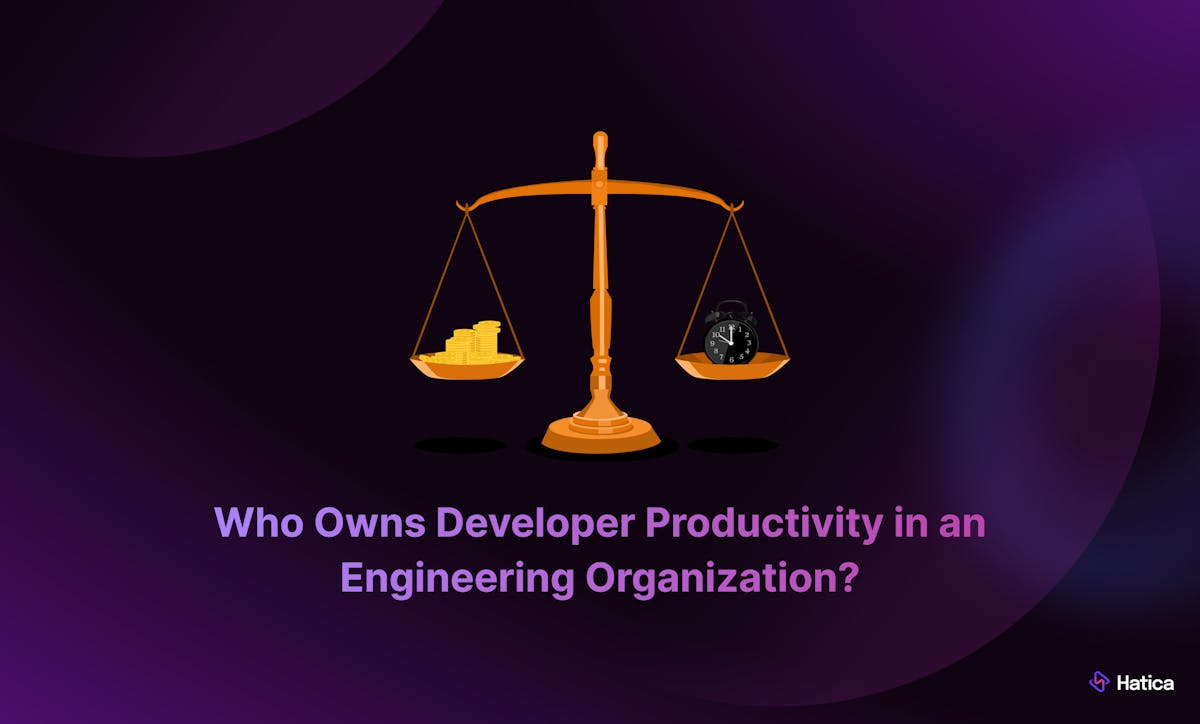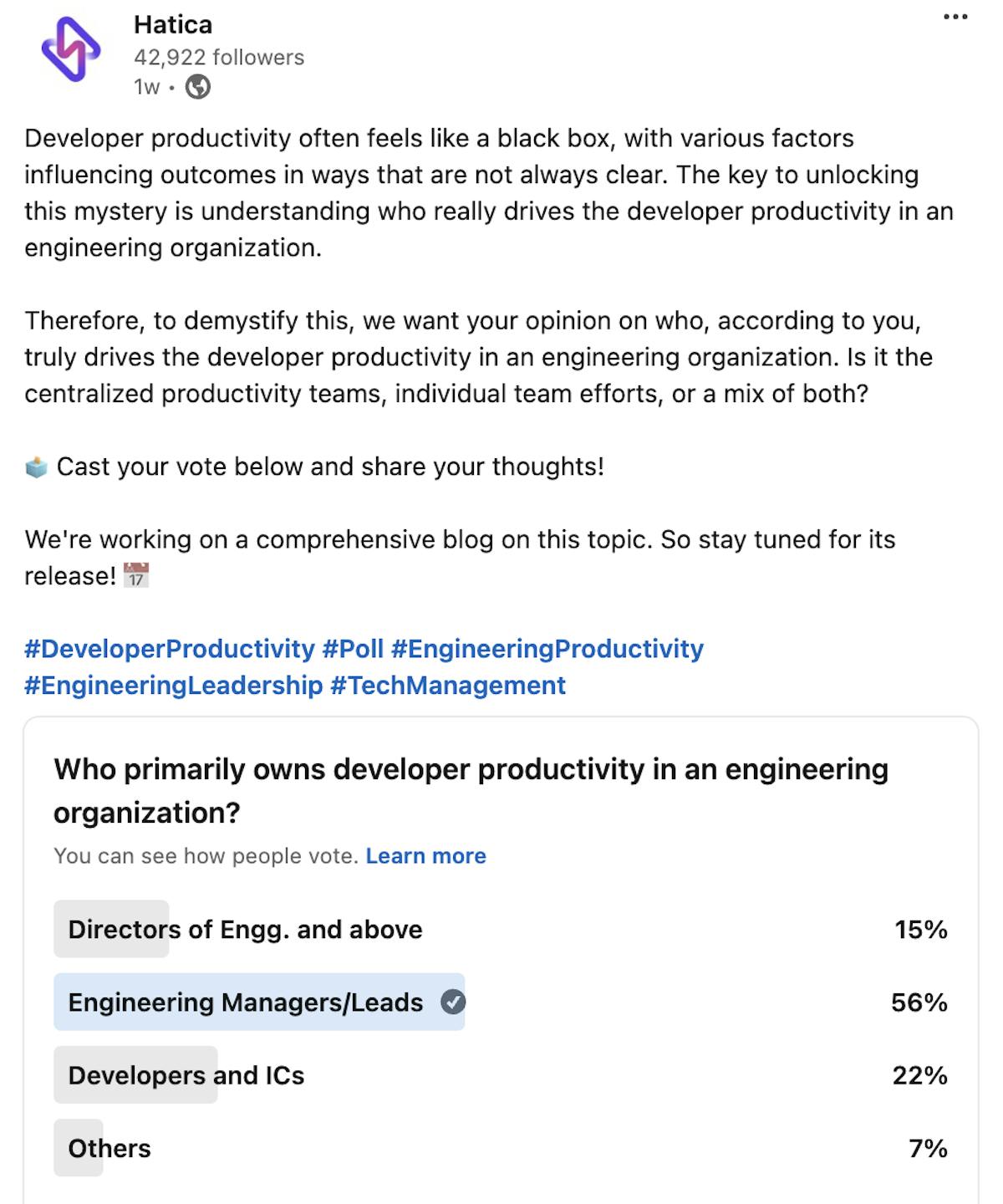Software development leaders are caught in a double bind: do more with less, while software becomes ever more critical to the business. This creates a crucial need for developer productivity, as Gartner's Philip Walsh rightly pointed out. But true productivity goes beyond merely writing code or releasing features. It involves creating an environment where developers can thrive, empowering them to work efficiently, innovate freely, and consistently produce high-quality work.
The focus on developer productivity is more prominent than ever, and investment in teams dedicated to fixing the gap is on the rise already..
But who exactly is responsible for the ownership of developer productivity, a critical metric?
In this blog, we'll get into the various facets of developer productivity and explore how different roles within an engineering organization can own it or influence it. We'll pinpoint who should prioritize and improve developer productivity and the part they play in this mission.
But first, let's take a closer look at the roles and their impact on developer productivity!
The Role of Individual Developers to Drive Dev Productivity
Individual developers are central to their own productivity. They write the code, solve problems, and drive innovation. Their skills, work habits, and motivation directly affect their productivity. And as they start working on projects in teams or pods, their individual productivity starts impacting the productivity and hence efficiency of the rest of the team as well.
However, placing the entire burden of productivity on developers is neither fair nor effective.
While they are on the front lines, their productivity is greatly influenced by the environment and support provided by their teams and the organization as a whole. A chicken and egg situation, quite literally.
The Impact of Engineering Managers to Drive Dev Productivity
Engineering managers are the conductors of a high-performing development team. They wield a powerful influence on developer productivity by creating an environment that removes roadblocks, provides the right resources, and encourages engineers to excel.
This includes setting clear goals, offering constructive feedback, and nurturing a culture of continuous improvement.
Let's get into the specific practices and policies that engineering managers can leverage to strategically enhance developer productivity:
- Regular One-on-Ones: These focused meetings allow managers to understand individual challenges and provide tailored support, ensuring each developer thrives.
- Crystal-Clear Communication: Establishing clear communication channels minimizes misunderstandings and keeps everyone aligned on goals and priorities.
- Investing in Growth: Encouraging and facilitating professional development through training and skill-building opportunities keeps developers motivated, engaged, and equipped with the latest technologies.
While engineering managers and their role in defining developer productivity is vital, ownership of developer productivity extends beyond them as well.
💡Additional Read: Hatica is building great engineering managers. Here’s How!
The Influence of Directors and VPs of Engineering for the Ownership of Developer Productivity
Directors and VPs of Engineering hold a strategic lens, viewing the engineering team within the broader context of the organization's goals and direction. They act as architects, ensuring the team's efforts are tightly aligned with the company's vision. Their decisions hold significant sway over developer productivity through resource allocation, project prioritization, and building a positive culture.
They make some strategic moves for peak performance, here’s how!
- Resource Allocation: Directors and VPs ensure teams have the essential tools and resources to operate efficiently. This could involve securing a budget for new development platforms or investing in developer training programs.
- Project Prioritization: Aligning projects with company goals is crucial. They strategically allocate teams, preventing developer overload by prioritizing critical initiatives.
- Cultural Initiatives: A healthy engineering culture is incredibly important. Directors and VPs can champion initiatives that promote work-life balance, continuous learning, and a culture of innovation, all of which contribute to a more productive team.
💡Additonal Reads:
- How a Director of Engineering Measure Engineering Efficiency
- A Guide for VP Engineering to Build a Data-Driven Engineering Culture
Who Owns Developer Productivity?
We ran a poll on Linkedin asking engineering teams the not-so-obvious question, “Who owns Developer Productivity in an engineering organization?” Our poll results underscore the widespread belief that engineering managers and leaders own or play a vital role in developer productivity.




